The Gods And the Demons Are Not Two  A Tantra of the Great Perfection With Tibetan Text Translated by Christopher Wilkinson Cover image: detail from a Thangka of Abhayakaragupta Renowned as a scholar and pre-incarnation of the Panchen Lama Silk brocade woven on the Imperial Looms at Hangchow China as an offering to the 9th Panchen Lama, Thupten Chokyi Nyima. Collection of Moke Mokotoff, New York, NY No part of this book may be reproduced in any form or by any electronic or mechanical means including information storage and retrieval systems, without permission in writing from the author. The only exception is by a reviewer, who may quote excerpts in a review. Published by Christopher Wilkinson Cambridge, MA, USA Copyright 2015 Christopher Wilkinson All rights reserved. ISBN : 1519615701 ISBN-13 : 978-1519615701 DEDICATION To the memory and inspiration of Dilgo Khyentse Rinpoche. Also translated by Christopher Wilkinson Great Perfection Series: The Tantra of Great Bliss: The Guhyagarbha Transmission of Vajrasattvas Magnificent Sky Secret Sky: The Ancient Tantras on Vajrasattvas Magnificent Sky The Great Tantra of Vajrasattva: Equal to the End of the Sky Beyond Secret: The Upadesha of Vairochana on the Practice of the Great Perfection Secret Wisdom: Three Root Tantras of the Great Perfection Sakya Kongma Series: Sakya Panditas Poetic Wisdom Jetsun Dragpa Gyaltsan: The Hermit King Admission at Dharmas Gate by Sonam Tsemo An Overview of Tantra and Related Works Chogyal Phagpa: The Emperors Guru Advice to Kublai Khan: Letters by the Tibetan Monk Chogyal Phagpa to Kublai Khan and his Court CONTENTS
A Tantra of the Great Perfection With Tibetan Text Translated by Christopher Wilkinson Cover image: detail from a Thangka of Abhayakaragupta Renowned as a scholar and pre-incarnation of the Panchen Lama Silk brocade woven on the Imperial Looms at Hangchow China as an offering to the 9th Panchen Lama, Thupten Chokyi Nyima. Collection of Moke Mokotoff, New York, NY No part of this book may be reproduced in any form or by any electronic or mechanical means including information storage and retrieval systems, without permission in writing from the author. The only exception is by a reviewer, who may quote excerpts in a review. Published by Christopher Wilkinson Cambridge, MA, USA Copyright 2015 Christopher Wilkinson All rights reserved. ISBN : 1519615701 ISBN-13 : 978-1519615701 DEDICATION To the memory and inspiration of Dilgo Khyentse Rinpoche. Also translated by Christopher Wilkinson Great Perfection Series: The Tantra of Great Bliss: The Guhyagarbha Transmission of Vajrasattvas Magnificent Sky Secret Sky: The Ancient Tantras on Vajrasattvas Magnificent Sky The Great Tantra of Vajrasattva: Equal to the End of the Sky Beyond Secret: The Upadesha of Vairochana on the Practice of the Great Perfection Secret Wisdom: Three Root Tantras of the Great Perfection Sakya Kongma Series: Sakya Panditas Poetic Wisdom Jetsun Dragpa Gyaltsan: The Hermit King Admission at Dharmas Gate by Sonam Tsemo An Overview of Tantra and Related Works Chogyal Phagpa: The Emperors Guru Advice to Kublai Khan: Letters by the Tibetan Monk Chogyal Phagpa to Kublai Khan and his Court CONTENTS
| Acknowledgments | i |
| Introduction | iii |
| The All Good One is Beyond the Dharma | |
| A Discourse in which Vajra Dharma Mati Blesses the Five Nirm a akyas | |
| An Explanation of the Blessings of the Three Kayas of the Children of the Victorious Ones | |
| Self-Liberation through Recognition of the View | |
| Recognizing the Meditator and Cutting through the Roots of Maras Life | |
| The Recognition of Maras in our Practice | |
| A Presentation on Results | |
| A Description of the Dharmakyas Blessings upon the Sambhogakya | |
| A Description of the Blessings of the Dharmakya and the Recognition of the Dharmakya in the Six Classes of Living Things | |
| Recognition of the Sambhogakya | |
| The Nirm a akya appears in the Circle of the Light of Awareness | |
| The Revelation that Vemacitra is a Nirm a akya | |
| Sharing the Taste of Being an External Fury | |
| Sharing the Taste of Diseases from Intermittent Attachment and Hatred | |
| Sharing a Taste for Ideas | |
| Sharing the Taste of Being a Secret and Unsurpassed Deity | |
| The Time of the Destruction of the World | |
| Living in a Peaceful Abiding | |
| Teachings on the Roots of our Attachments to the World | |
| Attachment to the Land of the Gods and Teaching the Dharma There | |
| Attachment to Self-originating Compassion while in the Land of the Humans | |
| The Ways in which the Asuras are Attached, and Turning the Wheel of the Dharma for Them | |
| The Ways we are Attached to the World of the Animals and the Descent of Compassion Even on Them | |
| Teachings to Destroy that Hungry Ghosts Attachment to the External World and Turning the Wheel that Brings Compassion Down from Above | |
| Turning the Wheel of the Dharma of Compassion in the Abodes of Hell | |
| Turning the Wheel of Self-evident Compassion for the Cold Hells and for the Temporary Hells that are Near Them | |
| Teaching the Way We Become Attached to the Vajra Hell and Turning the Wheel of the Dharma of Compassion There | |
| A Teaching that Turns the Wheel of the Dharma of Compassion on Attachment, Destruction, and Emptiness, along with the Three Kinds of Beings who Experience Them and That Their Magnificent Pilgrimage Sites Will Not Endure | |
| Teaching that Compassion Falls upon the Philosophical Theories in the Scriptures about the Vehicles and their Conclusive Result | |
| The Spike of Reason Is Planted through the External and Internal and Plants the Spike of Analogies for Teaching, Plants the Spike of Words of Vision, and Plants the Spike of Meanings into Words | |
| Revealing the Heart that Conceals the External, Internal, and Secret | |
| The Bequest of the Tantra | |
| Tibetan Text | |
| About the Translator | |
| Notes to the Introduction | |
ACKNOWLEDGMENTS First and foremost, I wish to thank my root teacher Dezhung Rinpoche for constantly bringing out the best in me and encouraging me to pursue a comprehension of every branch of Buddhist learning.
It was he who introduced me to Dilgo Kyentse Rinpoche, and through his recommendations enabled me to receive full empowerments, transmissions, and permissions in the areas of Mah, Anu, and Ati Yogas. With the highest regard I wish to thank Dilgo Kyentse Rinpoche, Khetsun Zangpo Rinpoche, Nyoshul Khen Rinpoche, and Khenpo Palden Sherab for their kind instruction and encouragement in my effort to translate the literature of the rDzogs chen. There are many individuals, too many to name here, that have helped me over the years to become a qualified translator, in many ways. At this time I want to remember the kindness of Ngawang Kunga Trinlay Sakyapa, Jigdral Dagchen Sakya Rinpoche, Dhongthog Rinpoche, H.H. Karmapa Rangjung Rigpay Dorje, Kalu Rinpoche, Chogyam Trungpa Rinpoche, Geshe Ngawang Nornang, Carl Potter, David Ruegg, Turrell Wylie, Gene Smith, Karen Lang, Richard Solomon, Jack Hawley, David Jackson, Cyrus Stearns, Herbert Guenther, Eva Neumeier-Dargyay, Leslie Kawamura, Robert Thurman, Paul Nietupski, Lou Lancaster, David Snellgrove, Jean-Luc Achard, Steve Landsberg, Tsultrim Alione, Carolyn Klein, Rob Mayer, Jonathan Silk, David White, Mark Tatz, Steve Goodman, and Kennard Lipman. I want to make special thanks to Sarah Moosvi for proofing the manuscript, to Robert J.
Barnhart for his generous support, and to Moke Mokotoff for the use of a detail on a thangka for the cover of this book. The many people who have contributed to my understanding and ability to do this work cannot be counted. I wish to thank everyone that has taken a kind interest in these translations, however slight, for your part in making this work a reality. INTRODUCTION To those familiar with the esoteric traditions of Buddhism, the Great Perfection is well known as a pathway of instant enlightenment, a vehicle for a sudden breakthrough of enlightened awareness here in the present. We may wonder, though, what the Great Perfection has to say about the obvious reality that there are all kinds of different beings who live under all kinds of conditions, and the reality that we ourselves go through all kinds of emotional turbulence even as we study the Great Perfection. What does the Great Perfection have to say about the demonic side of things? What does it say about our understandings of what divine beings are? How does it integrate a vision of the divine and the demonic into the fabric of instantaneous enlightenment? How do practitioners of the Great Perfection understand their own demons and preferred deities, and come to terms with them? In a world view wherein everyone is already enlightened, what is the function of compassion? These concerns are addressed in The Gods and the Demons Are Not Two.
Next page
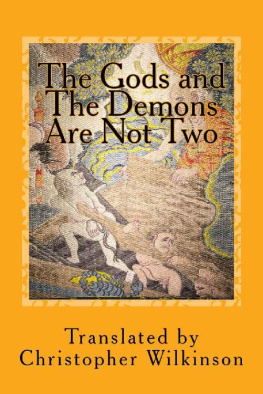
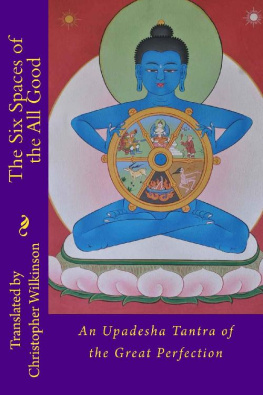
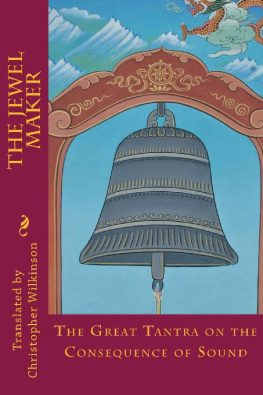



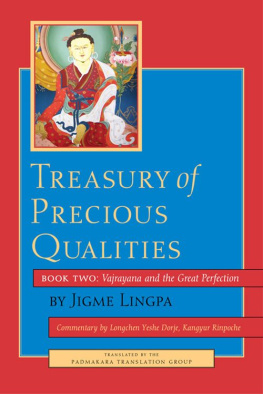

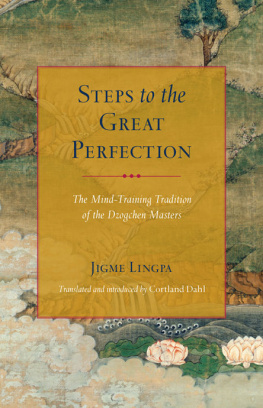
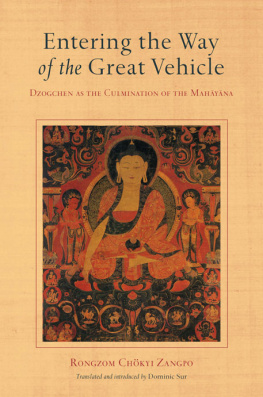
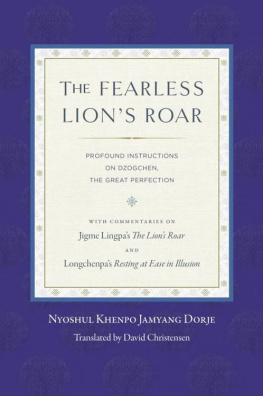
 A Tantra of the Great Perfection With Tibetan Text Translated by Christopher Wilkinson Cover image: detail from a Thangka of Abhayakaragupta Renowned as a scholar and pre-incarnation of the Panchen Lama Silk brocade woven on the Imperial Looms at Hangchow China as an offering to the 9th Panchen Lama, Thupten Chokyi Nyima. Collection of Moke Mokotoff, New York, NY No part of this book may be reproduced in any form or by any electronic or mechanical means including information storage and retrieval systems, without permission in writing from the author. The only exception is by a reviewer, who may quote excerpts in a review. Published by Christopher Wilkinson Cambridge, MA, USA Copyright 2015 Christopher Wilkinson All rights reserved. ISBN : 1519615701 ISBN-13 : 978-1519615701 DEDICATION To the memory and inspiration of Dilgo Khyentse Rinpoche. Also translated by Christopher Wilkinson Great Perfection Series: The Tantra of Great Bliss: The Guhyagarbha Transmission of Vajrasattvas Magnificent Sky Secret Sky: The Ancient Tantras on Vajrasattvas Magnificent Sky The Great Tantra of Vajrasattva: Equal to the End of the Sky Beyond Secret: The Upadesha of Vairochana on the Practice of the Great Perfection Secret Wisdom: Three Root Tantras of the Great Perfection Sakya Kongma Series: Sakya Panditas Poetic Wisdom Jetsun Dragpa Gyaltsan: The Hermit King Admission at Dharmas Gate by Sonam Tsemo An Overview of Tantra and Related Works Chogyal Phagpa: The Emperors Guru Advice to Kublai Khan: Letters by the Tibetan Monk Chogyal Phagpa to Kublai Khan and his Court CONTENTS
A Tantra of the Great Perfection With Tibetan Text Translated by Christopher Wilkinson Cover image: detail from a Thangka of Abhayakaragupta Renowned as a scholar and pre-incarnation of the Panchen Lama Silk brocade woven on the Imperial Looms at Hangchow China as an offering to the 9th Panchen Lama, Thupten Chokyi Nyima. Collection of Moke Mokotoff, New York, NY No part of this book may be reproduced in any form or by any electronic or mechanical means including information storage and retrieval systems, without permission in writing from the author. The only exception is by a reviewer, who may quote excerpts in a review. Published by Christopher Wilkinson Cambridge, MA, USA Copyright 2015 Christopher Wilkinson All rights reserved. ISBN : 1519615701 ISBN-13 : 978-1519615701 DEDICATION To the memory and inspiration of Dilgo Khyentse Rinpoche. Also translated by Christopher Wilkinson Great Perfection Series: The Tantra of Great Bliss: The Guhyagarbha Transmission of Vajrasattvas Magnificent Sky Secret Sky: The Ancient Tantras on Vajrasattvas Magnificent Sky The Great Tantra of Vajrasattva: Equal to the End of the Sky Beyond Secret: The Upadesha of Vairochana on the Practice of the Great Perfection Secret Wisdom: Three Root Tantras of the Great Perfection Sakya Kongma Series: Sakya Panditas Poetic Wisdom Jetsun Dragpa Gyaltsan: The Hermit King Admission at Dharmas Gate by Sonam Tsemo An Overview of Tantra and Related Works Chogyal Phagpa: The Emperors Guru Advice to Kublai Khan: Letters by the Tibetan Monk Chogyal Phagpa to Kublai Khan and his Court CONTENTS